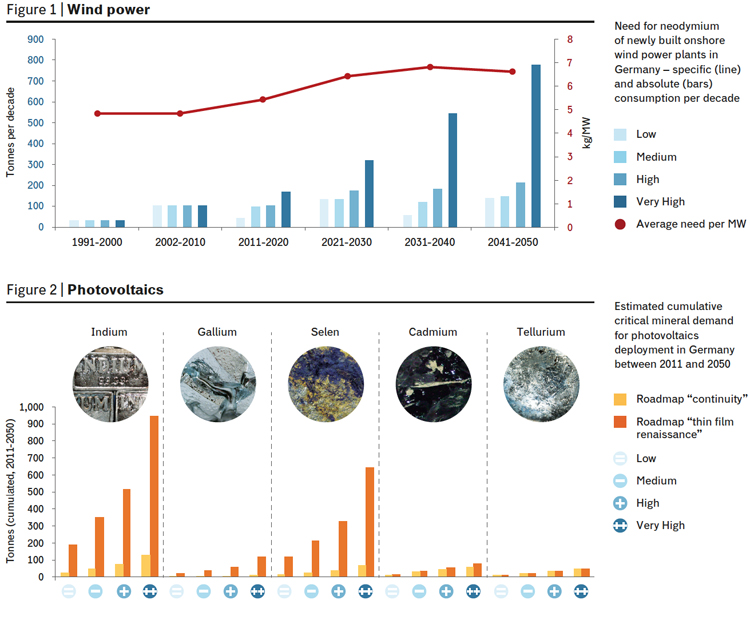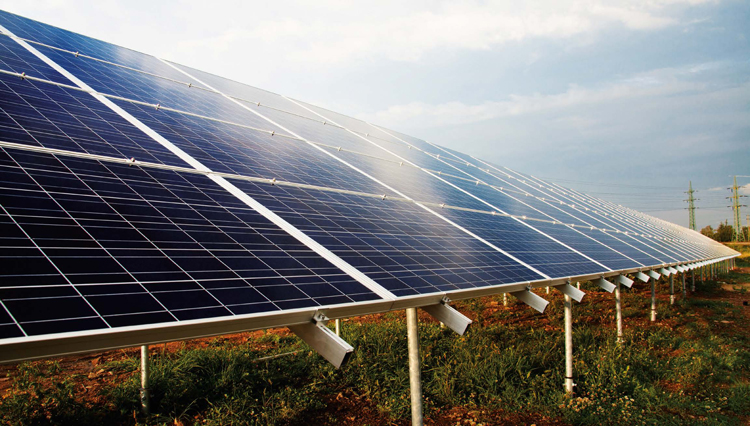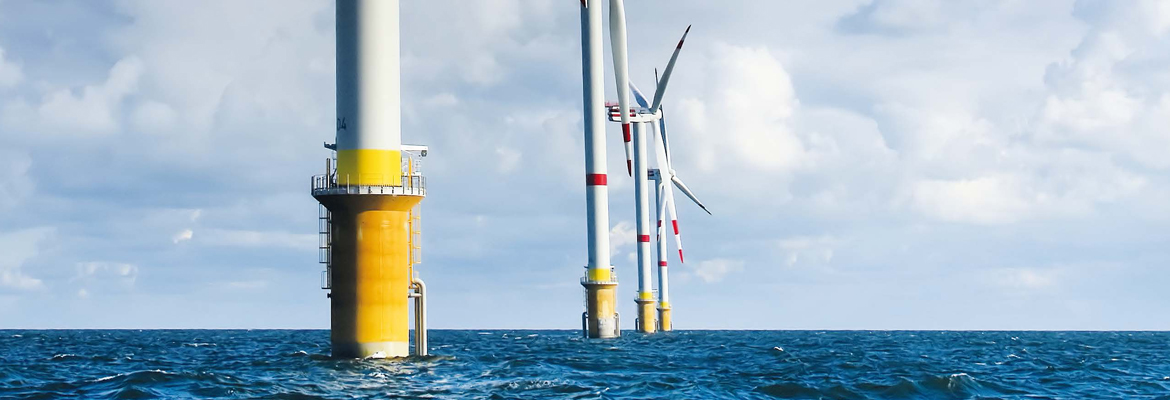Contribution to Ecoscienza 6/2014.
Challenge
The German Federal Government’s energy concept ascribes renewable energies the role of an “important pillar of future energy supply”. According to its targets, renewable energies are to account for 18% of gross final energy consumption by 2020, rising to 60% by 2050. If only electricity generation is considered, the proportion of gross electricity consumption contributed by electricity from renewable energy sources is to increase to 80% by 2050. However, it is not only energy supply or climate protection criteria that play a crucial role in realising the Energiewende and, in particular, the development of renewable energy sources. A comprehensive sustainability assessment of the individual technologies must be made taking into account a variety of criteria. Such criteria include short- and long-term cost considerations, energy security, the impact on land use and the countryside, social acceptability, environmental impacts and resource requirements.
When it comes to resource assessments, it is recognised that the overall resource utilisation of an energy system is generally considerably lower if it is based on renewable energies (albeit not primarily on biomass) rather than on fossil fuels. However, this does not necessarily mean that renewable energies must always be considered as being unproblematic with regard to the use of resources. In particular, limited research has been undertaken on the consumption and long-term availability of minerals, usually required in the manufacture of energy converters and infrastructure. In this connection, the availability of rare earth elements, such as indium, gallium, lanthanum and neodymium, and other raw materials that play a significant role, such as nickel and vanadium, is of particular interest.
Assessment Approach
The Wuppertal Institute conducted a study which attempts to close the previous assessment gap, contributing to the holistic sustainability analysis of renewable energies. The aim of the study finalised in 2014 was to provide an indication as to whether and how the transformation of the energy supply system can be shaped more resource-efficiently with a high degree of expansion of renewable energies. To achieve this, the study involved investigating which “critical” minerals are relevant in Germany for the production of technologies that generate electricity, heat and fuels from renewable energies in a time perspective up to 2050. In this connection, the assessment of being “critical” comprises the long-term availability of the raw materials identified, the supply situation, recyclability and the environmental conditions governing their extraction.
The analysis was undertaken with reference to different long-term energy scenarios created in recent years for the energy supply system in Germany. These scenarios describe different trajectories for the development of renewable energies up to 2050, right up to the extreme case of the full coverage of electricity and heat requirements from renewable energies. Figure 1 and 2 show, for example, a possible development of some mineral resources according to different scenarios for the deployment of wind power and photovoltaics by 2050.

Achievements
The study shows that the geological availability of minerals does not generally represent a limiting factor in the planned expansion of renewable energies in Germany. It may not be possible, however, for each technology variant to be used to an unlimited extent. Of the technologies investigated, the following have proven to be most probably non-critical with regard to the supply of minerals.
- Use in the electricity sector: hydropower, wind turbines without rare earth magnets, silicon-based crystalline photovoltaics, solar thermal power.
- Use in the heating sector: geothermal energy, solar thermal energy.
- Infrastructure: electricity grids, specific types of electricity storage devices, alkaline electrolysis and solid oxide fuel cells.
The supply of minerals in the use of biomass and biofuels in the electricity, heat and transport sectors cannot be classified as being critical either. However, the availability of biomass itself and the associated problems, especially land use and competitive usage, depending on the type of biomass, would have to be taken into account. These are not within the scope of this study though.
Specific elements or sub-technologies of wind energy, photovoltaics and battery storage were identified as being critical with regard to the supply of minerals. However, there are non-critical alternatives to these technologies that could increasingly be used in future or that already dominate the market.

The use of wind energy was investigated with regard to the consumption of neodymium (Nd) and dysprosium (Dy), which are increasingly being employed in high field strength permanent magnets in generators. In spite of a high degree of availability, an adequate supply of the required quantities cannot necessarily be guaranteed for Germany. One main reason is the excessive dependence on a few supplier states with a concomitant effect on security of supply. China is the only relevant dysprosium-producing country at present, for example. It is currently unclear whether other supplier countries will be able to become established in the long run and under which conditions the mineral would be extracted (production costs, quality of storage sites, environmental legislation, and so on). However, the use of Nd and Dy is non-essential for onshore facilities, since problems such as very heavy nacelles and expensive maintenance work for turbines mainly affect offshore facilities. In the case of offshore facilities, novel technologies not requiring any rare earths are in development and might play a role in the long term. As long as facilities with rare earth magnets are used offshore, they should ideally be designed to be recyclable.
Regarding photovoltaics, selected thin-film technologies were identified as being critical. The demand for indium in CI(G)S (copper indium gallium diselenide) cells does not appear to be secured in the long term. In particular, there is a major competitive usage due to increasing demand in LCD production, and simultaneously a high dependence on one supplier country (China). It would even be difficult to maintain the current market share in Germany (3% in 2012). It appears uncertain whether the need for selenium can be met from conventional sources. Hence a major expansion of this thin-film technology at least must be considered as being critical. In case of CdTe cells, it was assumed for various reasons that the technology would be phased out in Germany by 2020. The quantities of cadmium and tellurium required up to 2020 are regarded as unproblematic.
In case of electricity storage, consideration was given to battery storage for short-term, large-scale storage (redox flow batteries and lithium-ion batteries) and to alkaline electrolysis and hydrogen storage with reconversion in solid oxide fuel cells for medium- and long-term storage. From these technologies, only commonly available vanadium-based redox flow batteries must be considered as being critical regarding their raw material supply. In particular, there is a major competitive usage because vanadium is an important alloying element, e.g. for tool steels. This is compounded by the fact that there are only three relevant producer countries, namely China, South Africa and Russia. It is recommended to use lithium-ion batteries, which are considered to be less critical from the perspective of resource availability, or physical storage facilities (pumped storage plants, compressed air reservoirs) for short-term storage.

Conclusions
Whilst the heating and transport sectors are most probably not considered as being critical in the event of the direct use of renewable energies, attention needs to be paid to the electricity sector with reference to the research question raised. Even if the availability of minerals for the relevant technologies is not a problem, potential supply risks owing to dependencies on a few supplier countries and competitive usages should be borne in mind. One central aspect of the policy recommendations derived from the study is the proposal to focus in the medium term on efficiency and recycling strategies in the bid to secure Germany’s raw material supply. For example, increasing resource efficiency and recyclability should be key elements of technology development, and existing potential for recycling should also be exploited. However, every recycling process entails a considerable loss of material in some cases as well as a high energy input. In many cases (for example, where rare earth magnets are concerned) top-quality recycling is altogether difficult. For this reason, strategies for prolonging the useful life and life cycle of systems should be pursued alongside recycling strategies. In this case, close cooperation with industry is required.
Wuppertal Institut, KRESSE – Kritische mineralische Ressourcen und Stoffströme bei der Transformation des deutschen Energieversorgungssystems, Final report (in German), 2014, wupperinst.org/de/projekte/details/wi/p/s/pd/38/
Pubblication
Viebahn P., O. Soukup, S. Samadi, J. Teubler, K. Wiesen, M. Ritthof, “Assessing the need for critical minerals to shift the German energy system towards a high proportion of renewables”, Renewable and Sustainable Energy Reviews, 2015, 10.1016/j.rser.2015.04.070
Acknowledgements
The author thanks his colleagues Christine Krüger, Arjuna Nebel, Michael Ritthoff, Sascha Samadi, Ole Soukup and Jens Teubler for their contributions to the results presented in this article and the German Federal Ministry for Economic Affairs and Energy for their financial support.



